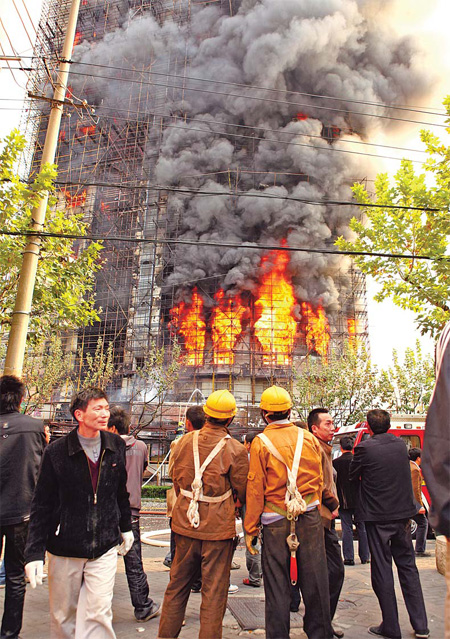Focus
Questions linger over inferno
By Wang Zhenghua (China Daily)
Updated: 2010-11-19 07:50
 |
Large Medium Small |
Foam dangerous?
Firefighters on the scene on Monday said the fire started when sparks from a welding torch ignited the bamboo scaffolding and nylon nets that surrounded the building.
However, residents have also blamed the energy-saving insulation material that was being installed.
A construction plan obtained by China Daily from Jiayi shows the company was using rigid polyurethane foam to improve the building's energy efficiency.
"Polyurethane foam plastic is inflammable. That is what turned the fire into a disaster," according to resident of a nearby building surnamed Bao told Xinhua News Agency.
In the same report, Xinhua detailed how Bao lit a piece of the yellow foam material with a lighter. It was entirely engulfed in flames within two seconds, producing thick, odorous smoke.
As insulation panels were also blamed for accelerating a blaze that gutted a building on the China Central Television complex in Beijing last year, there is now concern other buildings fitted with the material could also pose fire hazards.
Zhu Liping, a chief engineer with the Ministry of Public Security's fire department, explained that bamboo, nylon netting and polyurethane foam are all combustible and produce extremely harmful fumes.
He cited a 2008 nightclub fire in Shenzhen, Guangdong province, which killed 43 people and injured more than 80. It started when a stray firework ignited some polyurethane foam.
However, although inflammable, the foam can be modified to suit a variety of applications and to meet the national fire safety regulations. Rigid polyurethane foam is usually cut thinner than insulation materials, which means it would offer little fuel for a fire.
Tests on buildings containing rigid polyurethane foam insulation carried out in the United States and across Europe concluded that, if properly used, the material does not pose a serious hazard.
